LINEAR VS TACTILE SWITCHES FOR TYPING- DETAILED COMPERSION
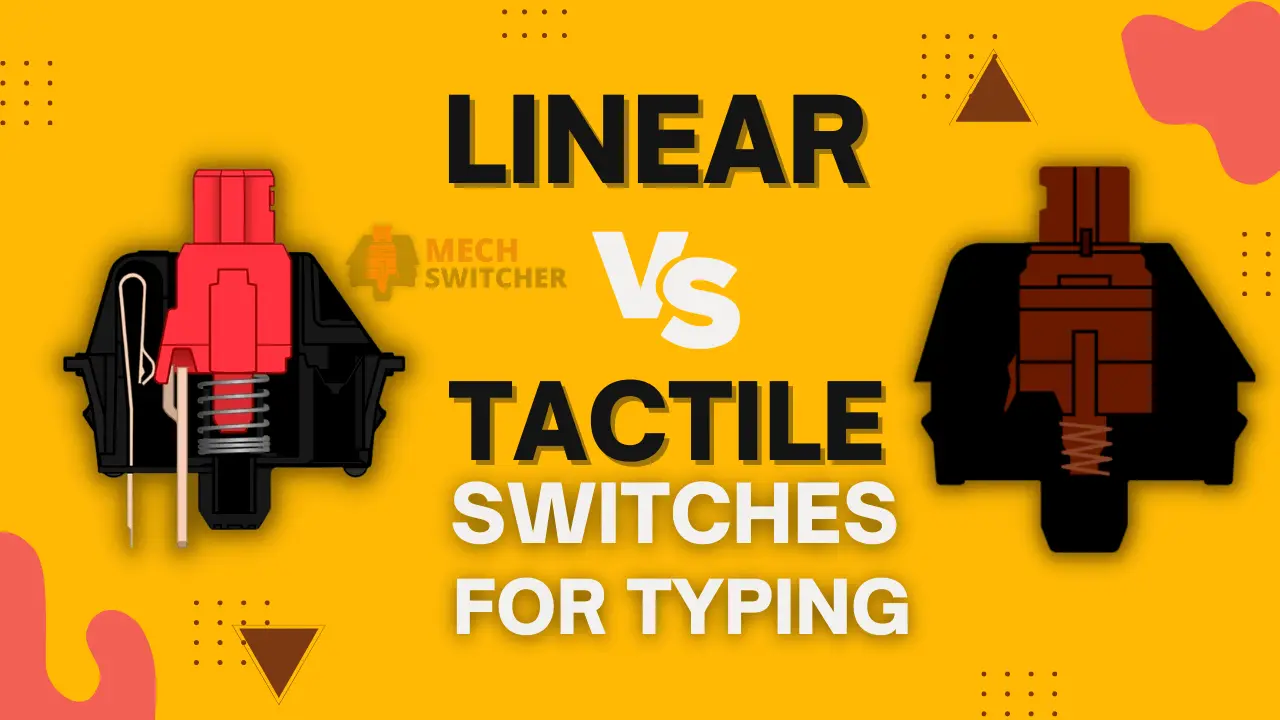
Which mechanical keyboard switches right as rain for typing, work, school, programming, and writing purposes. Nowadays, linear switches are also trendy for typing and office use. So to be cool, I’ve run-down a comparison of two popular mechanical switches, linear vs tactile switches for typing. And, help to consider the right one for you with great feelings.
Linear vs Tactile Switches for Typing?
While typing, linear switches provide a smooth actuation feel without tactile bump and noise. Moreover, you get sharp contrast and a consistent button feeling on each keystroke of linear.
On the other hand, typing with tactile switches provides a little button-pressing feel with a light tactile bump and moderate sound. Tactile switches are mostly used in co-working spaces and get fewer complaints than clicky switches.
You’re likely looking for a better typing experience if you consider a mechanical keyboard for the first time. Mechanical switches can be fun for beginners when I show them tactile switches.
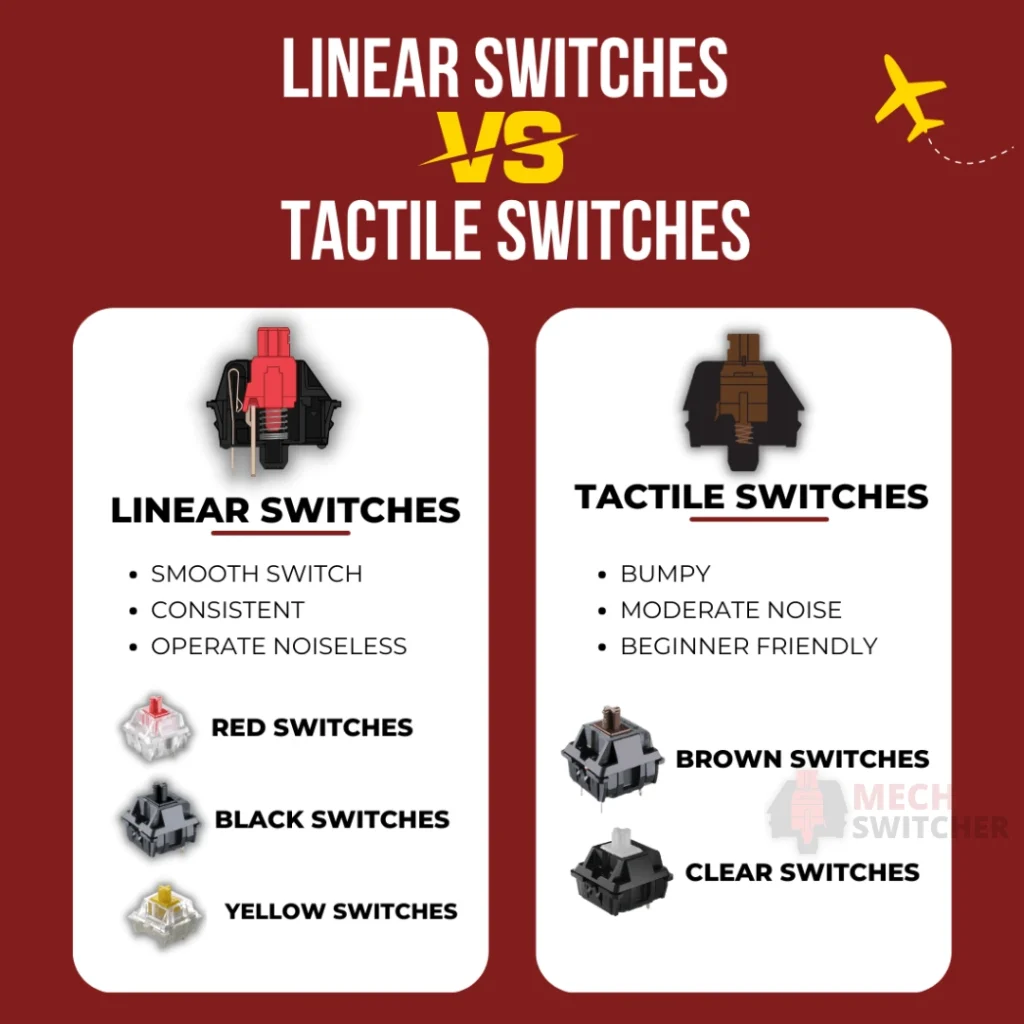
Due to their versatility, tactile switches are used by mechanical keyboard users more than just beginners. Besides being great for typing, these switches are also decent for gaming.
Linear vs Tactile Switches for Typing
| PROPERTIES | LINEAR SWITCHES | TACTILE SWITCHES |
|---|---|---|
| Actuation force | 45g | 45g |
| Sound level | Quiet | Moderate |
| Total travel distance | 4mm | 4mm |
| Tactility | Smooth, no bumps | Tactile bump |
| Keystroke feel | Light | Medium |
| Actuation point | 2.2±0.6 mm | 2.2±0.6 mm |
Right For Electing Linear vs Tactile Switches
In fact, you should choose tactile switches if you type a lot. Those near you may find it unpleasant to hear the loud clicking that comes with clicky switches. Moreover, tactile switches are a great place to start if you consider upgrading to a mechanical keyboard. You’ll love them. In terms of tactile feedback, linear switches are better than tactile switches.
Lets you register that a certain key has been pressed with sound and tactility. To have better control over the keys you press, you need to be aware of and conscious of what you are typing with tactile switches.
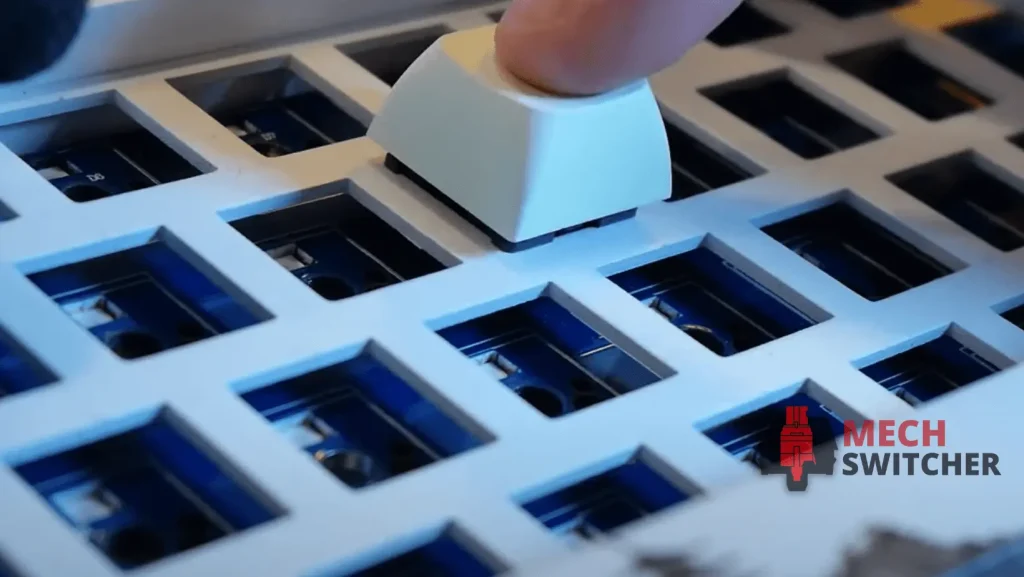
Furthermore, you might experience a delay if you play a video game with a tactile switch and want to react quickly. Gamers prefer linear switches because of their smoothness. Also, specifically designed speed switches are available as a subcategory of linear switches, which offers the advantage of accuracy while gaming.
However, newbies may find it challenging to master linear switches due to their high accuracy. For general use, linear switch mechanical keyboards are more likely to cause typos. As a result of such little feedback, it can be difficult to keep track of what keys you are pressing mentally.
The bottoming-out sensation can be an annoyance or discomfort for beginners who choose linear keyboards. You may have difficulty adjusting to these smooth switches, and your fingers can become sore from bottoming out by pressing keys “normally.” For gamers who want maximum precision, linear switches are an ideal choice, even for first-timers.
Difference between Linear and Tactile Switches for Typing?
There’s the following comparison of linear vs. tactile switches for typing, which helps consider right-as-rain characteristics, such as
Keystroke Noise
Compared to linear switches, tactile switches make more noise while in use. Tactile switches are characterized by a bump on top that makes a clicking sound with each keystroke.
Moreover, this extra noise provides a sense of immersion because it gives users a better sense of where they hit each key. Linear switches, however, will minimize noise the most if you want to minimize it to the barest minimum. Furthermore, clicky mechanical switches make the most noise during use and are louder than linear and tactile switches.
Tactile Feedback and Response Time
Linear switches provide a smooth typing experience, and tactile switches provide enhanced tactile feedback. Either option depends on personal preference. Would you prefer having no physical feedback or a satisfying click as you type? Getting tactile feedback can be helpful for newer typists to monitor their progress.
There will be less finger strain when playing competitive games and tying knots. It is better to use linear switches if you do not require tactile feedback. It has 55 CN (centinewtons) when it comes to Cherry MX black and silver, whereas it has 60 CN (centinewtons) when it comes to Cherry MX brown tactile switches. Compared to tactile, clicky, and linear switches have a high resistance level.
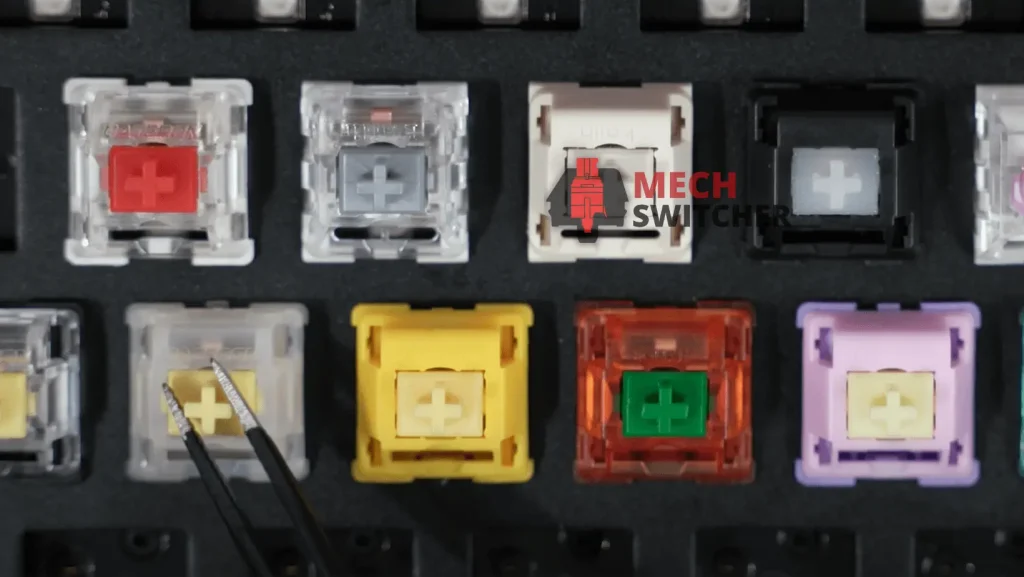
With a tactile switch, a key press takes slightly longer to register than a linear switch. As a result, a tactile keyboard will be slightly slower than a linear keyboard by around 1 to 2 milliseconds. Most people will not notice this, but competitive gamers, for whom every millisecond counts, may want to consider it.
Resistance level
Everyone needs to catch up on the resistance level when getting mechanical switches. Linear switches have a lower resistance level than tactile switches. Accordingly, resistance levels vary by type.
A linear switch has low resistance, which helps to increase keypress speed and reduce finger strain pain for gaming manufacturers. Known speed silver or red switches are also light and easy to press.
Gamers, typists, and general users can use Gateron yellow linear switches due to their medium resistance level. In contrast, brown tactile switches are popular because of their medium resistance levels, which aren’t ideal for gaming and can slow down performance.
The linear switch performs better than the tactile switch and is more responsive. In addition, the clear tactile switches have a high level of resistance. The resistance level of linear switches makes them suitable for gaming and typing, while tactile switches are appropriate for typing and browsing.
Key Advantages
Beginners need to remember the key advantage of mechanical switches while playing games or typing, and it’s imperative to understand the advantage of linear or tactile switches while playing games or typing.
It’s a fact that linear switches are regarded as the fastest switches in gaming by their low actuation, and high resistance level, and smooth keystrokes.
However, tactile switches are popular because they’re accurate since mechanical switches can sometimes be uncomfortable for newbies. Tactile switches are more accurate than linear switches, preventing keypress accidents.
RGB
There are three colors in RGB: Red, Green, and Blue. Certain keyboards nowadays have multi-shaded backlit illumination, also known as multi-color illumination. Switches beneath keycaps form the foundation of this system.
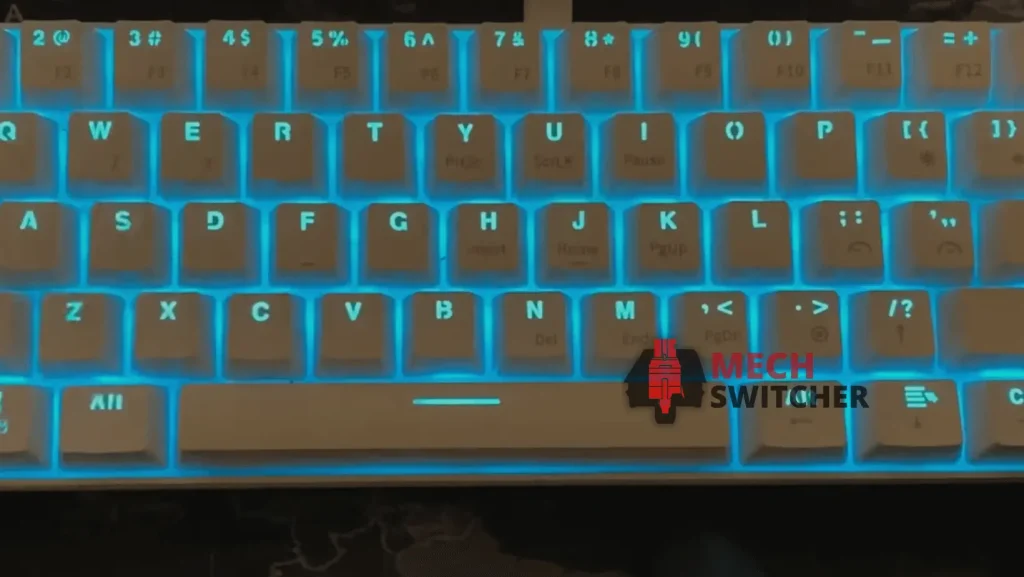
There is some degree of RGB support in almost all mechanical switches. In some cases, highlights have been improved, but in others, they aren’t worth it. We’re glad to see that RGB options are available both on linear and tactile switches. RGB backlighting is available on membrane keyboards as well.
RGB keyboards are your best bet for linear or tactile keyboards. All applications will feel and look better with a better keyboard. Lights should be turned off if they are not needed.
Actuation Points
To register a key, you must press it far enough down. When you press a key, it actuates. The situation can be viewed differently, however. Responses are quicker with fewer actuation points and forces.
An important aspect of a gaming or typing switch is its actuation. There is no significant difference in actuation force and point between linear and tactile switches. Red and brown Cherry MX switches are a good example.
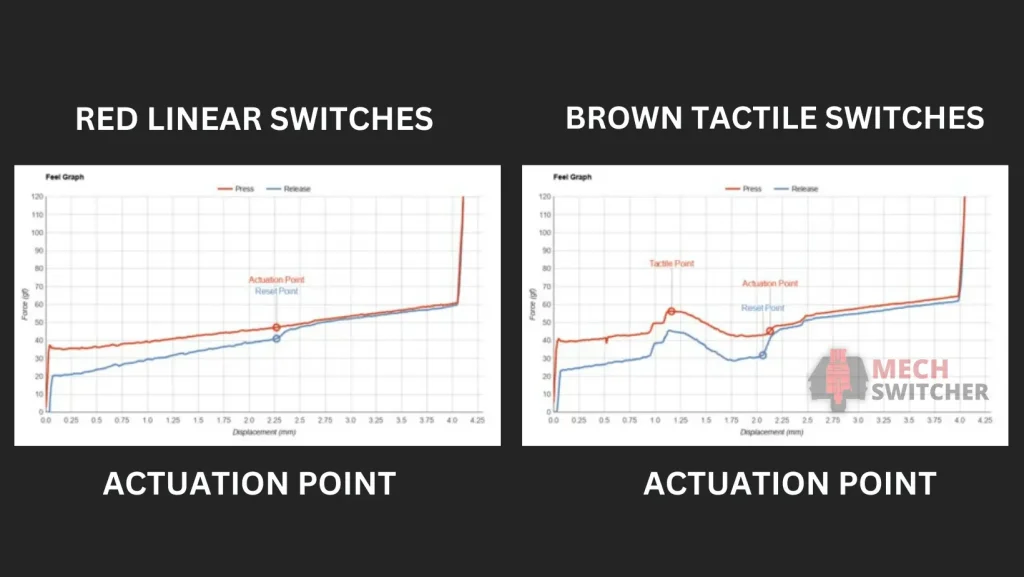
Cherry clones may produce different responses if you use them in your keyboards because they both give off the same responses while also makes a key actuate, you must apply pressure.
Choosing switches: Other important factors to consider
There are additional attributes to consider besides the different types of switches, such as clicky, tactile, or linear. Depending on the type of switch, the life expectancy, the spring force, and other factors can vary.
Low profile switches and standard switches: what are the differences?
You may encounter low-profile keyboards when you are shopping for one. Low-profile keyboards have shorter keycaps and switches.
Its slim, thin appearance, relief from wrist pain, and shorter switch stems can result in faster actuation are some reasons why some people prefer this style of keyboard.
Although low-profile keyboards do improve typing speed or accuracy, they do so only marginally. However, personal preference will dictate whether you prefer normal switches over low-profile switches.
Spring Force
During typing, each switch has its spring force or resistance. Based on your type of typing, you can customize this area.
Switches with a higher spring force are best for heavy typers to avoid a painful bottom-out. Typing as you normally do is comfortable if there is more resistance. If you are a light typer, you ought to look at lighter spring forces so that you won’t strain your fingers.
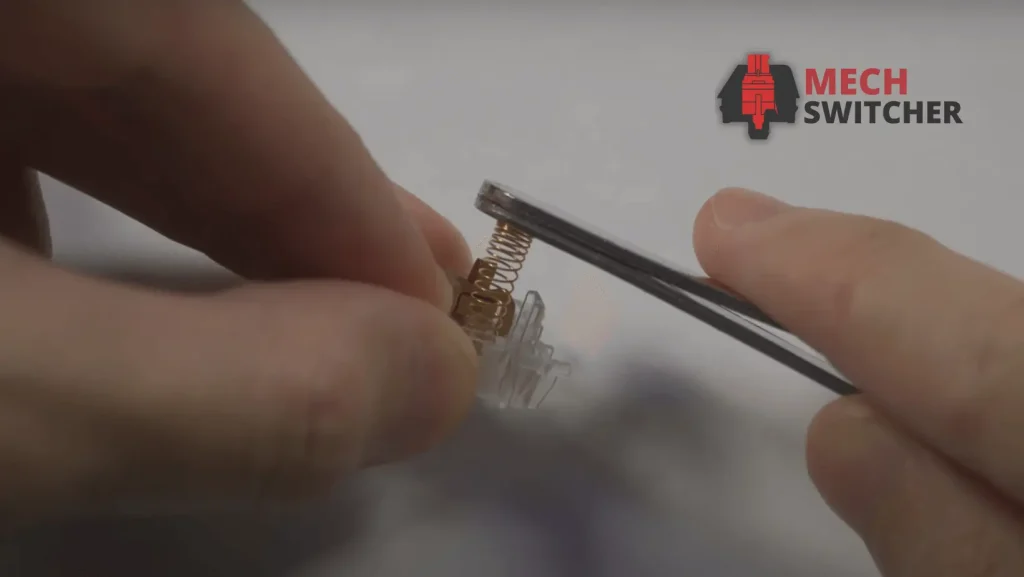
You won’t need to worry about spring force with the basic color options available on keyboards. The spring force may help you decide which keyboard is best for you when keyboards have many switch options.
Longevity
Depending on the brand and type of switch, switch lifetimes vary. Pay attention to the number of keystrokes when purchasing a keyboard that you will use a lot.
As one of the most reliable and long-lasting switches available, Cherry MX switches have a lifespan of 100 million keystrokes. It is estimated that other switch brands can withstand 50 million keystrokes.
To choose a switch, you should consider the amount of typing, not its lifespan. Switches and keyboards may need to be replaced sooner for someone who writes all day than for someone who occasionally plays games on their keyboard.
As far as how long a switch will last at 50 million keystrokes or 100 million keystrokes goes, that depends on your usage habits. I haven’t reached an “end” point with mechanical keyboards in the years I have used them.
Linear Red vs. Tactile Brown Typing Comparison
Cherry MX Red offers a linear switch that works well for fast-paced games, while Cherry MX Brown has a more stable switch.
Neither switch differs significantly from the other. A few details are worthy of mentioning when comparing the two.
| PROPERTIES | LINEAR SWITCHES | TACTILE SWITCHES |
|---|---|---|
| Behavior | Linear | Tactile |
| Sound level | Quiet | Moderate |
| Total travel distance | 4mm | 4mm |
| Rated Lifespan | 50 million strokes per key | 50 million strokes per key |
| Keystroke feel | Light | Medium |
| Actuation point | 2.2±0.6 mm | 2.2±0.6 mm |
Behavior of Switches
The use of tactile switches and keyboards is becoming increasingly popular. You get confirmation when you press a key with tactile and clicky switches. This indicates that the computer is registering it. When it hits the actuation point, it feels like a bump.
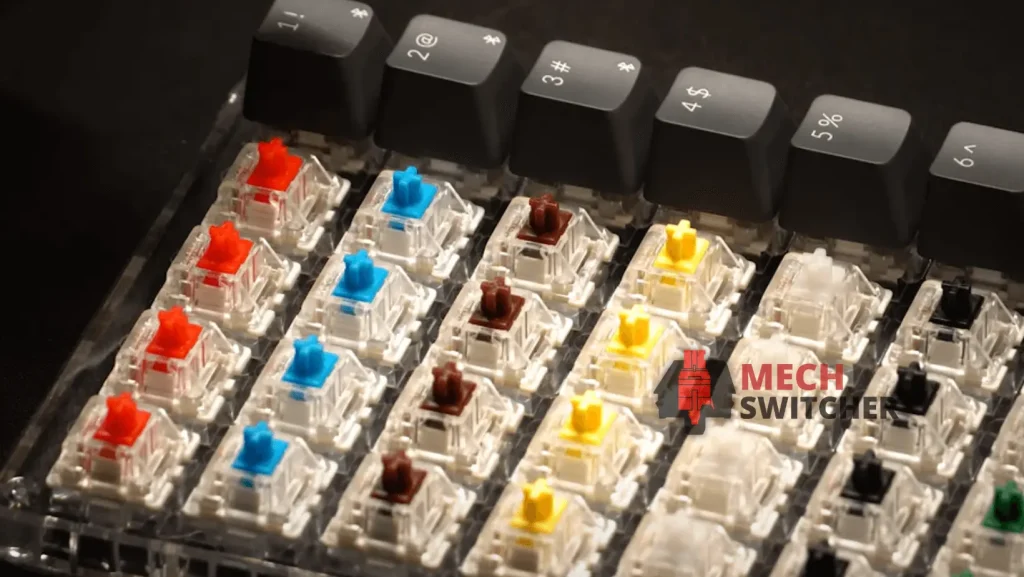
There is a big difference between Cherry MX switches and other switches regarding gaming or using your keyboard. In fact, due to its linear switch, the MX Red is great for fast-paced games, particularly first-person shooters. There is no click or bump with linear.
Typing Feel
Browns are more stable, even though the MX Red has a lighter feel. Neither will it rattle or wobble. A further advantage of Reds is that they are designed to be operated by simply touching them. Furthermore, typing with a lighter touch is pretty close to typos. Furthermore,
There isn’t much difference between typing with a lighter touch and typos. Playing a game requires you to be specific about a key. Moreover, the Red linear switches provide a light feel if that’s what you’re used to, but Brown switches are much more stable.
Noise Sound
The MX Red feels lighter, but the Browns are more stable. You won’t hear any rattling or wobbling. Reds are also easy to operate because they can be touched. It is also worth noting that typing with a lighter touch is similar to typos. Furthermore,
Lighter touches don’t make a big difference compared to typos. Linear Red switches may be more appealing to you than brown switches, depending on your personal preferences.
Key Travel
The most popular type of key for gamers travels a shorter distance. Both switches provide a 4mm travel distance. Consequently, the keys are easier to operate. In contrast, a long travel distance is desirable. It is easier to distinguish or pronounce each keystroke. Also, there is no difference in the key travel distance between the MX Brown and Red key switches.
Durability
Durability is a key factor in Cherry MX switch comparisons. Switches should have this feature. You will eventually become frustrated with buying switches constantly. Because of this, the Brown and the Red keys each have 50 million keystrokes. The build quality and design of Cherry products are also well known.
FAQ – FREQUENTLY ASKED QUESTIONS
To Conclude
There’s only a difference in sound and tactile bump between linear and tactile switches. They both are the same by actuation force, travel distance, and RGB. On the other hand, Compared to the Brown MX switch, the Red MX switch is very similar. Comparisons are more challenging than settling for one.
Since they share similar top features and functionalities, it all comes down to your personal preference. Moreover, there is no difference in the force required to activate the Cherry MX Red and Cherry MX Brown switches.
An MX Brown switch is generally a good compromise between a Red and another switch. However, if all factors are considered, the MX Red will come out on top. The Cherry MX Red switches offer rapid actuation, tactile feedback, and a great user experience for gaming and typing.
